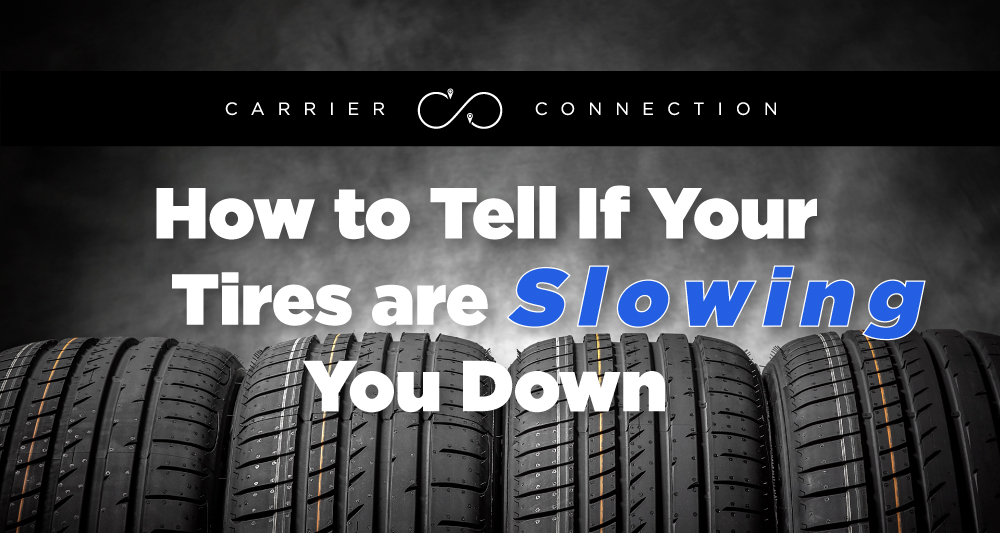![]()
Good tires keep your rig moving right, but choosing the wrong tires make can take the wheels off of your budget.
In today’s difficult market, minimizing expenses is what keeps most truckers in for the long haul. Tires are obviously a primary expense for fleets, but did you know that the condition of your tires can slowly eat away at your wallet?
There are a few things to look out for when evaluating your tires for cost-efficient performance. Let’s start with “What is tire rolling resistance?”
What is Tire Rolling Resistance?
In determining a truck’s fuel efficiency, rolling resistance, or the resistant force between the tire and the road, is critical. Simply put, the greater the rolling resistance, the less fuel-efficient a vehicle is.
When a tire is underinflated, rolling resistance increases drastically: For every 1 PSI drop, you can expect a .2 percent reduction in gas mileage.
Keep your tires properly inflated for a surefire way to cut your fuel bill.
Tread Depth
Though tread depth has a lesser relationship with fuel efficiency, the risks of worn tread depth are costly.
A steer tire is legally ‘worn’ once its tread measures 4/32 inches; however, even at this tread depth, the problems begin.
At 4/32 inches, your tires are more prone to blowouts and punctures that damage your truck. Aside from savings, low-tread tires are just plain dangerous: The NHTSA found that stopping distances can increase to drastically when worn tires are used.
To check your tread depth, check the tread wear indicator bars found on most commercial tires. If the tread is flush with the indicators bars, you’ll know its time to replace your tires.
Temperature and Weather Conditions
Did you know that the weather can significantly influence your fuel efficiency?
If temperatures are cold, you can expect to visit the pump more often. One study found that a rise in temperature decreased rolling resistance by 20-25%!
Additionally, tires begin to lose traction with colder temperatures—about 2.4 PSI drop for every 10 degrees. That means stopping distances increase, and the risk of a collision rises. Compound that with heavy rain, and you can expect nearly half the friction of a tire on a warm, dry day!
Trailer Tires: Radial vs. Bias Ply
Trailer tires and standard driving tires are completely different. Driving tires seek to maximize driver comfort with a flexible side wall. Trailer tires, however, have a rigid sidewall that allows for greater carrying capacity and stability.
There are two types of trailer tires: radial and bias ply. If you’re looking for greater fuel efficiency, radial tires are a great option for their low rolling resistance. Bias ply tend to promote greater stability for especially sensitive loads, but radial tires are the way to go for trimming the bottom line.
Tires are an essential expense for truckers, but by exercising best practices to increase fuel efficiency, you can score huge savings on fuel costs.
For excellent quality tires, visit the England Carrier Services tires page for more information.
The England Carrier Services (ECS) division offers various services for carriers ranging from maintenance to support. As ECS members, carriers have access to nationwide discounts on fuel and tires from dedicated team members committed to finding the best price. ECS also provides factoring services with benefits such as same-day funding to a bank account or fuel card. These options allow carriers the freedom to focus on growing their business while saving time and money.



